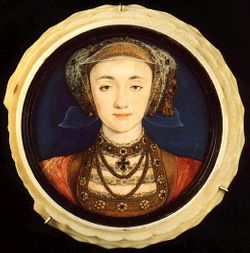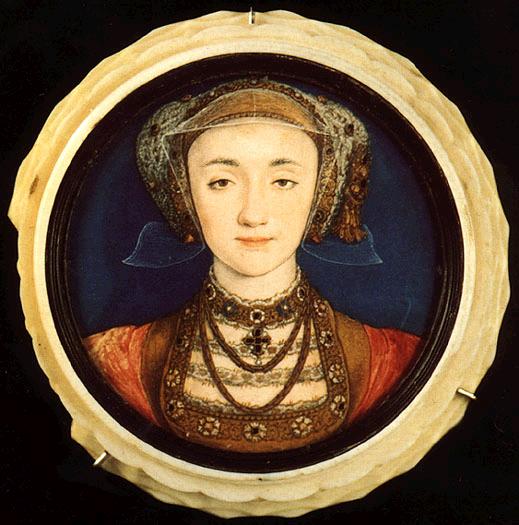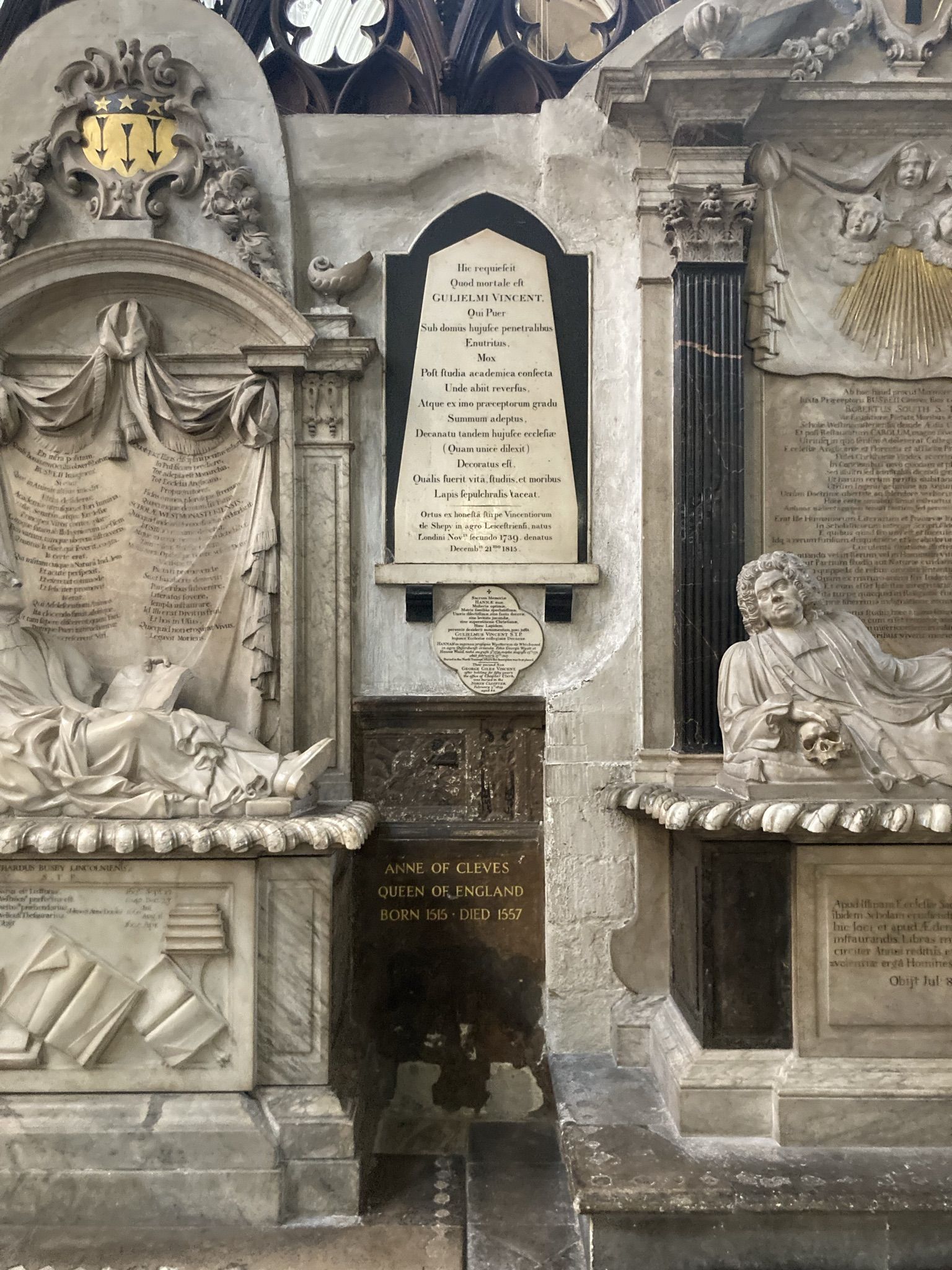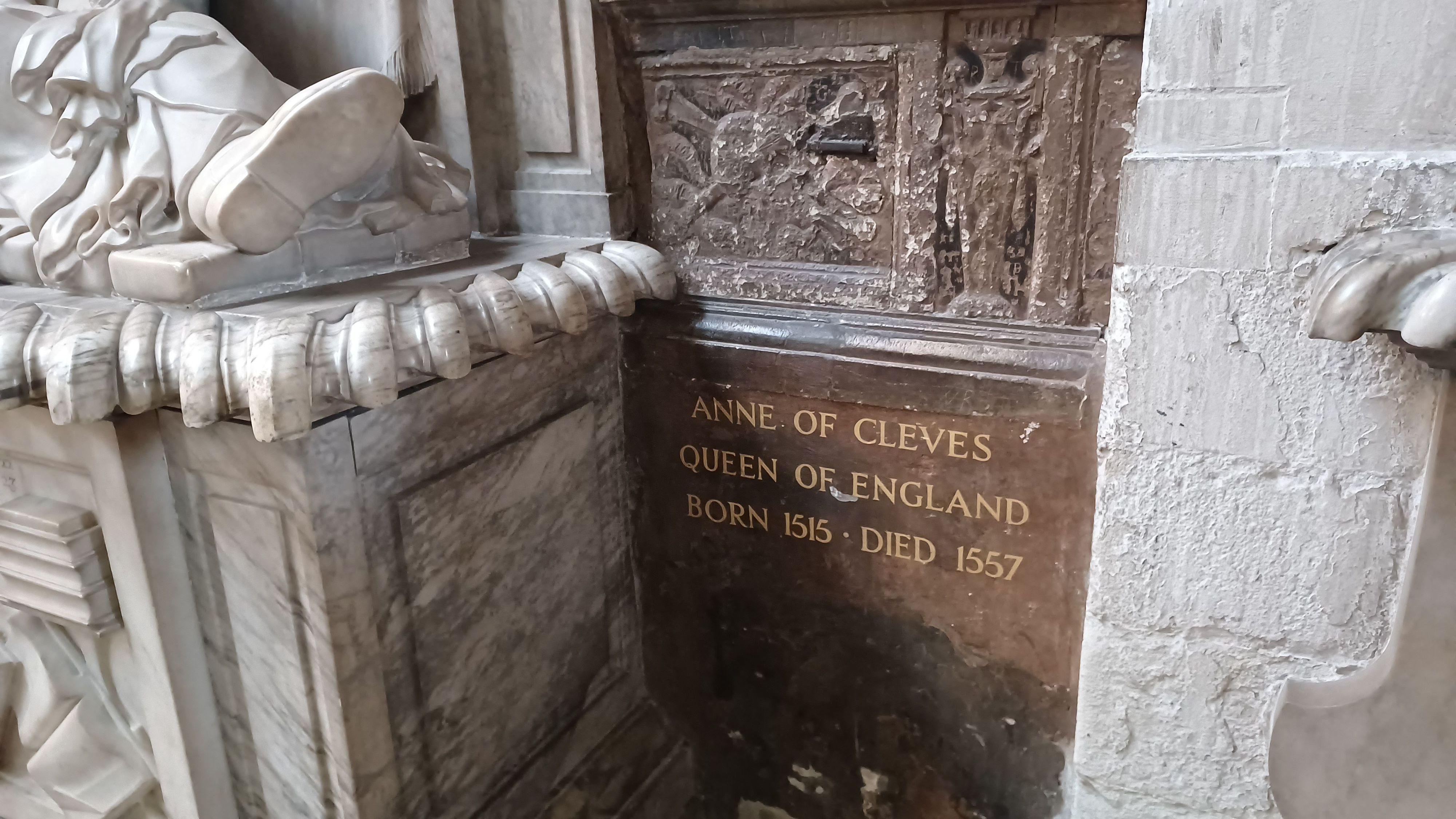She was born "Anna von Kleve" in Dusseldorf of present-day Germany, the second daughter of John III of the House of La Marek, Duke of Cleves, and his wife Maria, Duchess of Julich-Berg. She was raised in Schlossburg on the edge of Solingen, in present-day Germany. In 1527, she was unofficially betrothed to Francis, the son and heir of the Duke of Lorraine, but it was cancelled in 1535.
After the death of Henry's third wife, Jane Seymour, in 1537, Henry began searching for a new wife. Her father became an ally to King Henry VIII following the Truce of Nice and the King's Chancellor, Thomas Cromwell, urged a match between her and the King. The artist Hans Holbein the Younger was sent to paint accurate portraits of her and her younger sister, so that Henry could choose between them. Negotiations began in March 1539, with Cromwell overseeing the discussions.
A marriage arrangement was signed on October 4 of that year to give Anne to Henry as his new wife, sight unseen. She lacked education and cultural sophistication which Henry valued. She had no formal education, but was skilled in needlework and liked playing card games. She could read and write only in German, but was considered gentle, virtuous, and docile, qualities that made her a suitable candidate for Henry.
In late 1539, she traveled to England, and Henry first met her at Rochester. Henry was immediately disappointed with her appearance and the reality that she was ill-suited to life at his court of art and music. He referred to her in an unflattering way as the "Flanders Mare" and urged Cromwell to find a legal way to avoid the marriage, but it was impossible without compromising the vital alliance England had with the Germans.
Despite Henry's misgivings, they were married on January 6, 1540, at the Royal Palace of Placentia in Greenwich, London, England, by Archbishop Thomas Crammer, and she converted to the Anglican faith. Their marriage was never consummated, and she was commanded to leave the Court on June 24th of that year. On July 6, she was advised of Henry's decision to reconsider the marriage. She was asked to consent to an annulment of their marriage on the grounds of non-consummation, to which she agreed. It became official on July 9, 1540. Henry gave her a generous settlement, including Richmond Palace and Hever Castle (the former home of Anne Boleyn's family), as well as an annual income.
They remained good friends and she was often invited to his Court. She also became an honorary member of his family and he gave her the title "The King's Beloved Sister." After Henry's death, she converted back to Catholicism, as the new English monarch, Queen Mary I, was a strict Catholic. When her health started failing, Mary allowed her to reside at Old Chelsea Manor, where Henry's last wife, Catherine Parr, had lived after her remarriage.
She died there, six weeks before her 42nd birthday, and was interred at Westminster Abbey, the only one of Henry VIII's wives to be buried there. She holds the distinction of being the last of Henry VIII's six wives to die. She is the subject of three biographies: Julia Hamilton's "Anne of Cleves'"(1972), Mary Saaler's "Anne of Cleves: Fourth Wife of Henry VIII" (1995), and Elizabeth Norton's "Anne of Cleves: Henry VIII's Discarded Bride" (2009).
She was born "Anna von Kleve" in Dusseldorf of present-day Germany, the second daughter of John III of the House of La Marek, Duke of Cleves, and his wife Maria, Duchess of Julich-Berg. She was raised in Schlossburg on the edge of Solingen, in present-day Germany. In 1527, she was unofficially betrothed to Francis, the son and heir of the Duke of Lorraine, but it was cancelled in 1535.
After the death of Henry's third wife, Jane Seymour, in 1537, Henry began searching for a new wife. Her father became an ally to King Henry VIII following the Truce of Nice and the King's Chancellor, Thomas Cromwell, urged a match between her and the King. The artist Hans Holbein the Younger was sent to paint accurate portraits of her and her younger sister, so that Henry could choose between them. Negotiations began in March 1539, with Cromwell overseeing the discussions.
A marriage arrangement was signed on October 4 of that year to give Anne to Henry as his new wife, sight unseen. She lacked education and cultural sophistication which Henry valued. She had no formal education, but was skilled in needlework and liked playing card games. She could read and write only in German, but was considered gentle, virtuous, and docile, qualities that made her a suitable candidate for Henry.
In late 1539, she traveled to England, and Henry first met her at Rochester. Henry was immediately disappointed with her appearance and the reality that she was ill-suited to life at his court of art and music. He referred to her in an unflattering way as the "Flanders Mare" and urged Cromwell to find a legal way to avoid the marriage, but it was impossible without compromising the vital alliance England had with the Germans.
Despite Henry's misgivings, they were married on January 6, 1540, at the Royal Palace of Placentia in Greenwich, London, England, by Archbishop Thomas Crammer, and she converted to the Anglican faith. Their marriage was never consummated, and she was commanded to leave the Court on June 24th of that year. On July 6, she was advised of Henry's decision to reconsider the marriage. She was asked to consent to an annulment of their marriage on the grounds of non-consummation, to which she agreed. It became official on July 9, 1540. Henry gave her a generous settlement, including Richmond Palace and Hever Castle (the former home of Anne Boleyn's family), as well as an annual income.
They remained good friends and she was often invited to his Court. She also became an honorary member of his family and he gave her the title "The King's Beloved Sister." After Henry's death, she converted back to Catholicism, as the new English monarch, Queen Mary I, was a strict Catholic. When her health started failing, Mary allowed her to reside at Old Chelsea Manor, where Henry's last wife, Catherine Parr, had lived after her remarriage.
She died there, six weeks before her 42nd birthday, and was interred at Westminster Abbey, the only one of Henry VIII's wives to be buried there. She holds the distinction of being the last of Henry VIII's six wives to die. She is the subject of three biographies: Julia Hamilton's "Anne of Cleves'"(1972), Mary Saaler's "Anne of Cleves: Fourth Wife of Henry VIII" (1995), and Elizabeth Norton's "Anne of Cleves: Henry VIII's Discarded Bride" (2009).
Bio by: William Bjornstad
Inscription
QUEEN OF ENGLAND
Family Members
Advertisement











